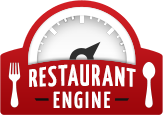Restaurant Management – Who Does It Better USA or Europe?

Restaurants provide food and a great customer experience to diners.
The economy of restaurants in America and Europe are different in many respects. So, for this article, we sat down and put together a few of the reasons that restaurants in different parts of the world have different cultures.
In fact, we’re going to look at restaurant management and ask the question, “Who does it better, USA or Europe?”
First, let’s look at a bit of history to provide some background.
History of American Restaurants
The first restaurants in America served travelers a very limited menu of food and drink, depending on what the owner was cooking that day.
In the late 1600s, the first coffeehouse started in Boston, and restaurants began evolving. By the 19th century, more and more restaurants had opened across the United States. Moving forward into the 1970s, diners could fast food franchises and more. Today, we enjoy a wide range of chains and local eateries often featuring unique offerings such as the farm-to-table trend.
History of European Restaurants
The world’s oldest continuing restaurant, Sobrino de Botin, can be found in Madrid. Opening in 1725, this European restaurant features specialties such as delicious suckling pig and lamb roasted in the Castilian style and is one of the top three restaurants in the world.
The history of restaurants in Europe actually began much earlier with monasteries and abbeys in the Middle Ages as they opened their doors to travelers.
In the 17th century, most meals were eaten at home, except the well-to-do could hire a caterer or eat their meals in a private salon instead of a public dining house. Then, in the 19th century, during the Industrial Revolutions, hotels began opening in major cities bringing restaurants to the area.
Throughout the centuries, fine dining has been part of European culture and continues to be so today.
Now let’s look at who does it better.
Slow vs. Fast Meal
For most people, eating in a European restaurants is an affair you linger over. In fact, restaurants encourage you to linger at your table.
This is quite different from restaurants in the USA where you are seated, hurry through a meal, and moved on so another party can sit down.
It seems that food critics and bloggers have been complaining for years that American servers rush their customers out the door by clearing the plates as soon as people put their fork down and bringing the check straight away.
In American restaurants, moving tables is key, both for the restaurant and the server’s tip count.
Europeans count on the slow meal. In fact, many go home or to restaurants for long lunches while stores and shops shut down. Contrast this with many Americans who simply eat a quick lunch at their desk.
Additionally, in Spain, dinner doesn’t begin until much later, often 9 pm or 10 pm. Meals are something to be savored with friends and family. Americans usually eat earlier and are then off to their next task.
So, who does it better? It really depends on who you ask. While a long, leisurely meal sounds wonderful, American restaurants aren’t going to dump their current business model as their servers would be in an uproar. In Europe, waiters work for a wage and not tips, so the model is different.
But American restaurants can show a bit of extra customer service to people who do want to linger. They can do this by not trying to rush customers out the door. And, they can wait to bring the check until it’s asked for. This goes a long way to a better customer experience.

It’s okay to take a day off and give your team a breather from a hectic schedule.
Open All Week vs. Closed Some Days
The majority of restaurants in the US are open seven days a week and many for all three meals.
Yet, in Europe, you’ll find restaurants that may close some days during the week, shutter their doors on the weekend, or even shut down for a month during the summer.
How can this help restaurant management? It can give staff who often work high stress, demanding jobs some time off to relax and refresh. It can even help alleviate burnout.
Because restaurant hours are long and hard, perhaps the Europeans do this one better as they help employees be their best when they are on the job.
The Kitchen
One area where American restaurants do seem to excel is in the organization and management of their kitchens and inventory. (tweet this)
Why is this? It may be because often US health and safety standards are more regulated.
Ambiance and Authenticity
Sure, there are more fast casual and fine dining restaurants in the US, so that makes this next comparison a bit hard.
But overall European restaurants are more unique, more authentic, and more themselves than American restaurants.
Go to most any restaurant in Italy or Spain, large or small, costly or reasonable, and across the board, you’ll have wonderful ambiance and great food. Your meal will be an experience.
You might even say the standard of cooking overall is better in Europe than America. This is overall, though, because there are many amazing restaurants in America in every state.
But, for authentic cuisine, Europe may do this area better.
How can US restaurants provide the same ambiance and authenticity? You can do this by knowing exactly who you are and what you stand for. If you’re Italian cuisine, be that. If you’re meat and potatoes, be that.
Tell a story with your menu. Use your menu items to give your customers a real experience. This is one they want to return for again and again.
Today’s diners want an experience, and it’s relatively easy for you to give it to them.
Final Thoughts
Bottom line to the question, “Who does it better, USA or Europe,” and the answer is there are pros and cons to both, and each has something to learn from the other.
The most important thing for any restaurant is to provide excellent customer service, a delicious menu, and an experience to remember.
This doesn’t just mean the luxury restaurants, though. Even small, fast casual establishments can provide all of the above.
Build bonds with your customers. Let them know it’s okay to linger. Treat your staff well. Consider your pay structure. Provide the best food and experience you can. Train your staff in the art of customer service. (tweet this)
At the end of the day, any restaurant, European or American, can be the very best.
At Restaurant Engine, not only do we create great, responsive websites, but you can count on us to create a website that drives business to all your restaurants and edges you above the competition by using mobile-friendly design with a terrific user experience. Ready to take the plunge and create a website with an online menu, blog and beautiful photos? Get your free website consultation today!
Images: Austin Distel and Toa Heftiba on Unsplash


Leave a Reply